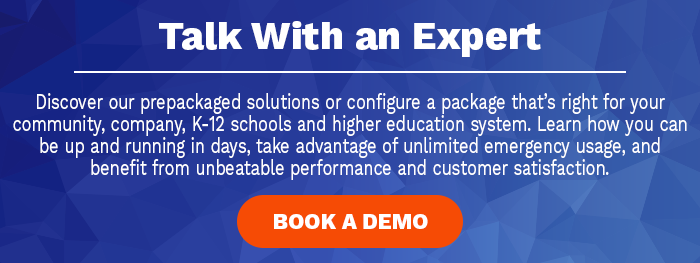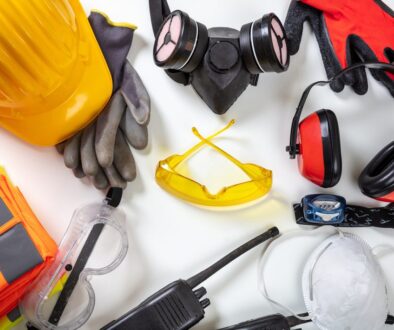Back to Basics: School Safety
As the world continues to recover from the COVID-19 pandemic and understand what education looks like in the “new normal,” college and K-12 school administrators can benefit from taking a back-to-basics approach. Despite the continuing existence of COVID-19 variants, large-scale vaccination programs and virus mutations have reduced the death rate. If this trend continues, students and faculty can plan on consistent in-person learning and less reliance on remote and hybrid schedules during the 2022-2023 academic year.
There are widespread benefits to reopening schools for in-person learning, including better mental health among students and higher standardized test scores. However, the traditional classroom environment does present several challenges for school security personnel.
As students return to in-person learning, administrators and faculty members must address inherent student safety issues. Higher education and K-12 school security efforts must include effective crisis management strategies and comprehensive emergency preparedness plans that incorporate reliable mass communication tools to maintain contact with students, parents and first responders before, during and after a crisis.
Top school safety challenges
Many school safety challenges existed prior to the COVID-19 outbreak but have become more severe during the pandemic. Reinfection rates in children are not as high as in adults, but they may increase as variants emerge and schools drop mask requirements and students remain in close proximity to one another in the classroom.
Other COVID-related challenges continue to exist. Cyberbullying is an ongoing problem, and a return to in-person learning may provide more opportunities for traditional bullying and violent behavior. Additionally, schools face severe staffing shortages as teachers continue to resign in the face of high stress, political battles and threats of violence. The long-term mental health consequences of the pandemic can affect students and faculty alike, potentially increasing the risk of emotional breakdowns and/or physical attacks.
Finally, administrators, faculty and students will continue to face school safety challenges regardless of what happens with COVID-19 in the future. Natural disasters, illnesses, mental health issues, fires and active shooter events will be just as disruptive and dangerous as they were before the pandemic.
A report released by the U.S. Department of Education and the U.S. Department of Justice, Office of Justice Programs provides key details on school crime and safety. The report includes data from 2000 through 2021, some of which paints a grim picture.
For example, although the rate of nonfatal criminal victimization (e.g., theft and violence) has decreased from 2009 to 2020, the number of school shootings has risen significantly since 2000. In the 2019-2020 school year, 22.2 percent of students between 12 and 18 years old reported being bullied at school. Data from the same year shows a marked increase in cyberbullying, verbal abuse of teachers and racial/ethnic tensions compared to 2009-2010.In response to ongoing school safety challenges, administrators must continue to conduct mandatory drills and create incident management plans for various school crisis scenarios. They must verify that their mass communication systems are reliable and capable of providing multimodal emergency notifications quickly. As existing threats evolve and new ones emerge, educational institutions much continue to find ways to overcome these challenges to ensure the safety of students and staff.
Effective communication is essential for school security
Communication is a vital part of an effective school safety plan. Without a reliable, fast and robust mass communication system, many problems can occur.
Students may discuss safety concerns with each other rather than reporting them to security personnel. Substitute teachers may not receive essential alerts and instructions during a crisis, leading to confusion and increased danger. Law enforcement and media personnel may be inundated with misinformation via social media posts and other unofficial channels, hampering coordination and reducing the effectiveness of response procedures.
As such, it is vital to give staff members (including substitute staff members) access to communication solutions with comprehensive functionality:
- Alert colleagues to adverse events
- Seek assistance when necessary
- Review emergency protocols as required
- Receive critical communications and updates
- Contribute to a coordinated response
- Help towards the continuity of operations
While theoretically, a smartphone could fulfill these functions, it doesn’t provide enough functionality or reliability, especially during an emergency when seconds count.
In a crisis situation when individuals are experiencing panic, fear, and other extremely strong emotions, they are unlikely to have the presence of mind to look up emergency procedure documents or scroll through their contacts to find the right person to call. Likewise, a simple fire alarm system may increase confusion if it can’t clearly provide shelter-in-place vs. evacuation orders. These are just some of the challenges that can waste precious time and delay law enforcement response during a crisis.
A critical communications tool must address these issues by providing a clear, fast and reliable way to initiate emergency response. Additionally, it must allow administrators to communicate essential instructions to students, parents and incident commanders.
Overcoming the communication challenge with mass notification tools
The Rave Mobile Safety Panic Button is a smartphone app capable of simultaneously alerting staff members and emergency responders to the risk of danger, the nature of the threat and its location. The app’s intuitive interface is easy to understand in the most stressful of circumstances and can be activated with just two taps of a smartphone screen. It also includes preset options for various threats, such as fires, medical emergencies and active shooter events.
Throughout any event (emergency or non-emergency), the app can act as a portal for two-way communication via text, voice and/or video. This enables users to receive critical communications and updates, and allows incident managers to increase their situational awareness. The app’s ability to facilitate a coordinated response minimizes the duration of disruptions, contributes to the continuity of operations and, most importantly, keeps students and staff safe.
The Panic Button isn’t the only school safety tool Rave offers. Another feature of our mass communications system is text-to-tip functionality, which enables students to discreetly and anonymously report suspicious or disruptive behavior. This option encourages students to remain vigilant and can facilitate early intervention into bullying, violence and mental health crises.
To find out more about improving school safety and overcoming communication challenges, speak with our team of experts and schedule a demo of our mass communications solutions.





